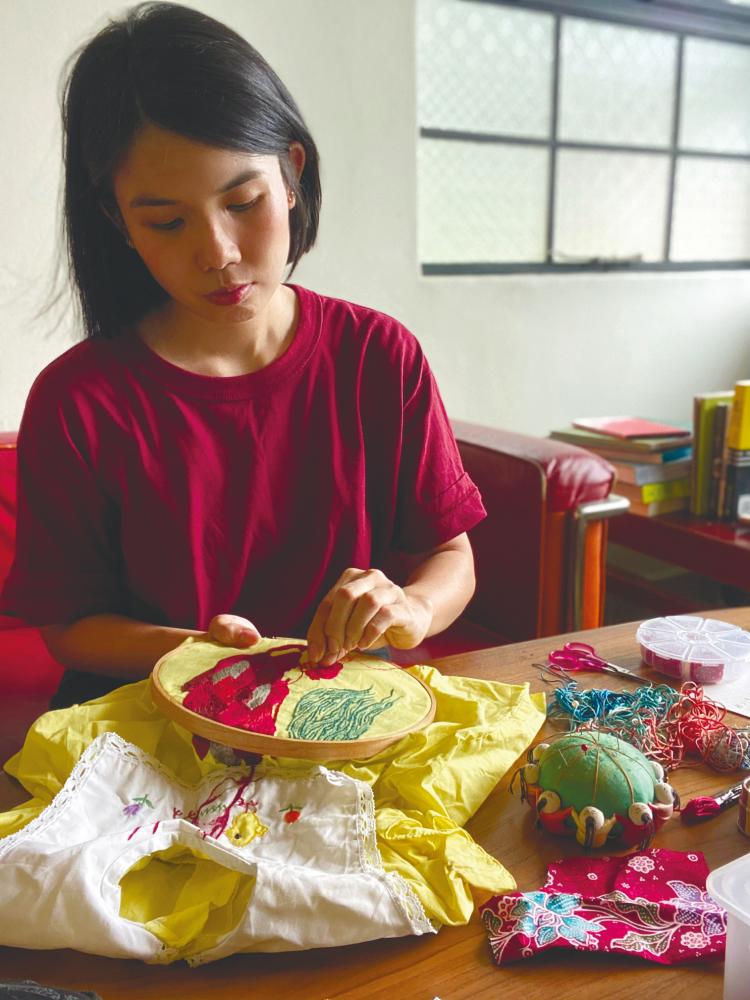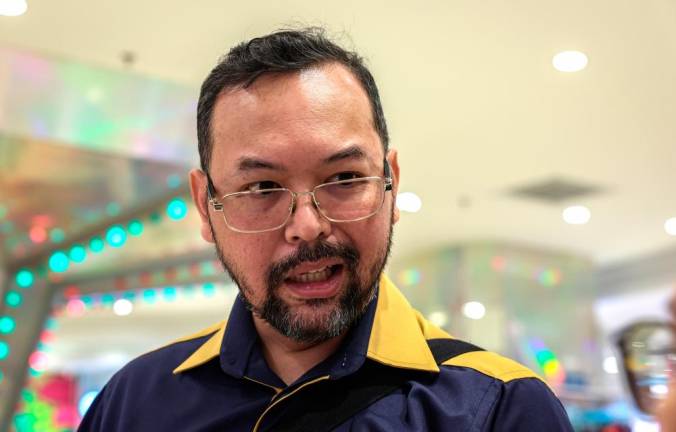CHONG Yi Lin’s artworks explore a dark theme that is not frequently on the radar for her contemporaries.
She has chosen to express emotions about death and loss through her textile art and painting.
“My art is a form of restoration of my feelings towards objects. People will leave but objects won’t. In my artwork, I discuss love and loss in all its simplicity,” said Kuala Lumpur-born Chong.
The 29-year-old award-winning artist, who has a Bachelor of Fine Arts from the Taipei National University of Arts, has exhibited her works in Taiwan.
Currently, Chong is exploring felting needlework and researching the mythology of plants, another offbeat subject for most artists.
Clearly, Chong loves to challenge herself by taking the path less travelled.
How would you describe yourself as an artist?
As Martin Heidegger said: “In the (woods) there are paths, mostly overgrown, that come to an abrupt stop where (it) is untrodden. They are called Holzwege. Each goes its separate way, though within the same forest. It often appears as if one is identical to another. But it only appears so.”
As people seek the right path in life, I believe that art is one of the paths in the woods for me. Through this path, I use my own art language to bond with the world.
How did your journey into art begin?
Art is the only thing I have really wanted to do in my life. Through the years, I gained more valuable exposure and education from the Dasein Academy of Arts and Taipei National University of Arts. Everything just happened naturally.
What is your latest artwork the Pandora Box series about?
I am fascinated by mountains. I had the idea of bringing the mountains home but mountains cannot be uprooted.
The MCO period has made me a little depressed and I miss being in nature. Thus, I used needle felting and embroidery as a medium to create mini-mountains, and put them in a wooden box.
It’s a gift to myself. Some textile works are currently in progress. It’s a time-consuming project.
What inspired you to start a plant drawing project?
I like to hike, enjoying the sounds of nature and looking at the magnificent scenery. They are many different unique plant species that grow in the mountains.
I thought of blending my observation and imagination about the plants.
What is the story on your works involving the Good Morning towel?
The Good Morning towel was
once a part of daily life
in Chinese households. It
represents a bygone era of Southeast Asia.
My memories of the towel come from a childhood memory of my great grandmother’s funeral procession.
In a traditional funeral, the bereaved family would hand out the towels for people to wipe tears and sweat.
It also signifies wiping away bad luck.
For me, the towel is the metaphor for grief.
In my Evanescent series, I explore
the bereavement
and deepest feelings for the
loss of a loved one and how the loss is felt.
I believe that threads can hold things together through needlework. It goes back and forth to embed the emotions into the towel with hand-drawn abstract images.
What medium do you apply in your artworks?
Drawing and embroidery. Using threads to “draw”. Thread and lines are vulnerable and soft. It is an important part of our lives.
I employ conventional methods and mediums to explore a fusion of nostalgia, symbolism and little rituals in our everyday lives.
What are your ongoing projects?
Currently, I am having an artist residency at Rimbun Dahan (a private arts centre) and working on the plant drawing project.
I am also doing some research on plants and mythology for my next art project.













